The succinate “Umami” inhibits the proliferation of cancer cells.
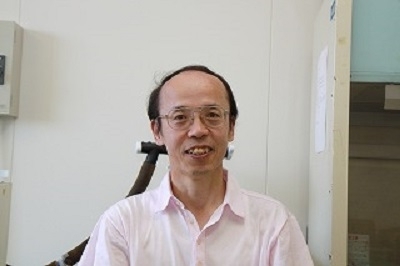
In this edition of Research NOW, we interviewed Professor Norihisa Kato, Chair of Food Resource Science, Department of Biofunctional Science and Technology, Graduate school of Biosphere Sciences.
(2009 September 10th, Interviewed by Public Relations Group, Community Collaboration and Information Policy Office)
Profile
Professor Kato graduated from the Faculty of Fisheries and Animal Husbandry, Hiroshima University in 1974. After getting a doctorate in Agricultural Chemistry from the Graduate School of Nagoya University, Professor Kato first became a part-time lecturer, then an associate professor in 1981 at the Faculty of Applied Biological Science of Hiroshima University and became professor in 2001. Professor Kato is affiliated with the Graduate School of Biosphere Science since 2002.
During his time in elementary, junior and senior high school in Iwakuni, Yamaguchi prefecture, Professor Kato was devoted to playing the accordion. As professor Kato describes himself on his own homepage, he also joined the track-and-field club and science club during junior high school and became so busy that there was not even time to study.
During senior high school, since Professor Kato was too busy playing the mandolin, it was especially “biology”as his weak subject (because he was bad in remembering things) that caught our attention. Even being such person, professor Kato opened his eyes for the first time to the fun of science (biochemistry) when in the second grade of the university. After that he gave himself totally up to the science of nutritional science.
Click here for the homepage of the laboratory for molecular nutrition. (Japanese Page)
The succinate “Umami” inhibits the proliferation of cancer cells.
At a conference, professor Kato met the president of a confectionery company who was born in Hiroshima prefecture and who studied at the same graduate school. Then, they discussed that they “want to do some collaborative research some time”. Well, this has become a reality. This confectionary company asked Professor Kato to analyze and evaluate the functionality of boysenberry (a crossing between blackberry and raspberry and member of the Rubus genus originating in New Zealand, which lately is attracting attention as a healthy fruit), because the company wanted to use it for making sweets, which resulted in the start of collaborative research in 2007.
Boysenberry contains a large amount of ellagic acid which is a sort of natural polyphenol. Professor Kato started to study its influence on the alimentary canal through injections into rats. During the research process it became clear that the concentration of succinate (also known as “umami” substance in shellfish and Japanese sake) largely increased in the large intestine of rats. Strangely enough, the polyphenol rutin (found in “soba” (buckwheat) etc.) and ellagic acid (found in strawberries etc.) remarkably increased the production of succinates through fermentation in the intestines.
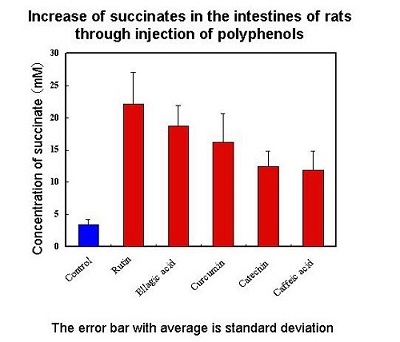
The group with receiving polyphenols showed a significant increase statistically in comparison with the control group without receiving polyphenol (the error bar of the standard deviation indicates dispersion of data).
Effect of intake at daily life level
When investigating what kind of effect of an increase of succinate in the intestines has on cancer cells in the colon, it could be found that the proliferation of colon cancer cells decreased by nearly 50% and even had an inhibitory effect on stomach cancer cells when the concentration was approximately 20 millimole (mM) (This news was introduced on the first page of the Chugoku Shimbun newspaper of May 21, 2009). Succinate was discovered in 1932 by a Japanese scientist as a typical example of “umami” substance, but this is the first time that anti-disease effects can be accredited to succinate.
“The amount of 20mM succinate is equivalent to the concentration of shellfish sap that we normally consume and since the effect can be obtained through intake of food on a daily basis, it is suitable for the development of medicine or functional food. The fact that succinate that exists around us, is so effective is of great importance. It also might have a preventive effect on other diseases”, according to the professor, who is expecting further results.
The professor is not only working on clarifying the preventive effect on several diseases, but is also starting collaborative researches toward developing functional food with local enterprises using shellfish such as oysters which are a specialty of the Hiroshima region and Japanese sake which contain an abundant amount of succinate.
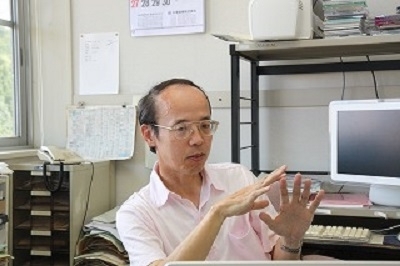
"Because both oysters and some Japanese sake are well-known products from Hiroshima..."
Expectation of another effect: the inhibitory effect on angiogenesis
Furthermore, the professor discovered that succinate also has the effect of inhibiting angiogenesis (the creation of new blood vessels). It has become clear that the stretch of blood capillary in rats is inhibited by 60% when the concentration of succinates is 30mM.
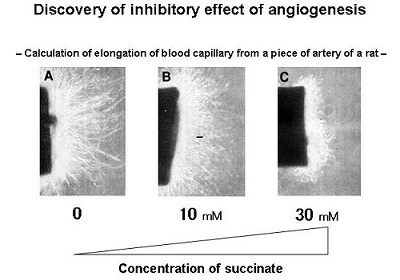
The stretch of blood capillary from a piece of artery of a rat is inhibited proportionally to the concentration of succinates.
The proliferation of cancer cells is associated with metastasis and infiltration. In the focus of cancer, a shortage of nutrition and oxygen arises due to lack of blood flow. Cancer cells then, in order to avoid this shortage, create new blood vessels to secure and increase a metastasis route.
In case of diabetes, atherosclerosis causes the blood vessels to become stiff, fragile and will easier block the blood flow. The retina has concentrations of small blood vessels and a high blood glucose level putting a large burden on the blood vessels and worsening the flow of blood fluid which carries oxygen and nutrition and thus causing a lack of nutrients in the retina cells. This is where retina cells create new blood vessels to avoid shortage of oxygen due to damage of the blood vessels. However, new blood vessels are very fragile and bleed easily, which causes damage to the functionality of the eye and even may cause blindness in the worst case. This is called blindness caused by diabetic retinopathy. Lately it has been suggested that angiogenesis is related to Alzheimer disease and Rheumatism.
The inhibitory effect of angiogenesis is expected to have effects on other human diseases besides cancer. “Interestingly, I didn’t know till later that succinate is used as a material for cosmetics. It is believed to have the effect of keeping the skin tense. Since it has been reported lately that angiogenesis is the cause of wrinkles, the inhibitory effect of succinate on the skin might be related to angiogenesis”, so the professor tells us.
Paying attention to things that no one did before.
In 1989, when visiting an international conference of nutrition in Seoul, people from a pharmaceutical company that joined the same sightseeing tour, mentioned that compared to soybeans, buckwheat has hardly been the subject of serious research. Then they proposed a collaborative research on buckwheat proteins, saying that they want to know everything about buckwheat including its flaws like hard to digest and causing allergies.
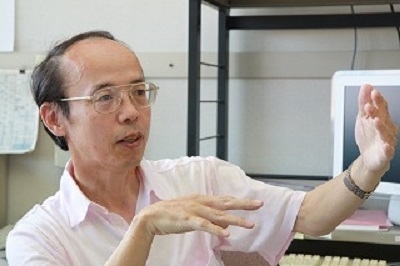
The encounter on the sightseeing tour has become the start of the current research style.
At the time, research in the US and Europe on cholesterol-lowering effect of soybean proteins, discovered that a hydrolysate of that protein (peptide: a chain of several amino acids. More digestive than proteins) has a cholesterol-lowering effect, drawing large attention from all over the world. Professor Kato found out that proteins from buckwheat have a stronger cholesterol-lowering effect than soybean proteins and worked hard to isolate the peptide that contains the cholesterol-lowering effect. However, the process failed because different from the case of soybean proteins, the cholesterol-lowering effect disappears together with the decrease of molecular weight when using hydrolysis (the experiment itself took 5 years).
“It was that very day when the Great Hanshin Earthquake (January 17, 1995) took place that I will never forget. So far, it has been assumed that “good digestion” equals “healthy”, but why should there be a problem with “not digestive” = “healthy”, I noticed. I looked at the issue from a different angle. If it has the same effect of dietary fibers, effects such as inhibitory effect on cholesterol, inhibition of accumulation of body fat, improvement of constipation and inhibition of expression of cancer in the colon can be expected”. In experiments using rats, the inhibition of increase of concentrations of cholesterol in the blood and liver was confirmed. In 1997, professor Kato discovered that resistance to the digestion of buckwheat proteins decreased the cholesterol in the blood and proposed the concept of “resistant proteins”(Note 1). That was the birth of a new discipline.
Note 1: This indicates proteins that are hard to digest by the human body. Generally, from nutrition supply point of view, it was evaluated that easy to digest food are more superior in nutrition because they are more efficient. However, food with low digestibility (hard to digest) proteins, inversely are better for health as professor Kato has made evident for the first time in his research. So far, several resistant proteins have resembling effects to dietary fibers, among which decreasing effect of cholesterol, inhibitory effect of obesity and inhibitory effect of cancer in the colon have been discovered and are believed to be phenomena that can be widely and generally seen in proteins of most plants. This term also appears in the latest textbooks on nutritional science.
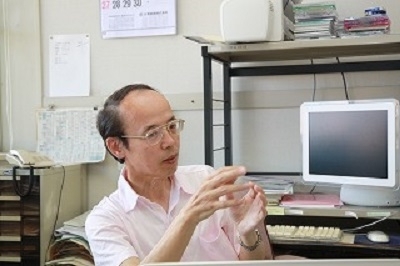
It was only a matter of looking at it from a different angle.
Later researches conducted by research groups domestically and overseas acknowledged the several effects of buckwheat proteins, making buckwheat beloved not only in the food industry, but more widely and generally cherished as health food “buckwheat”.
The professor tells us that generally nutritional science analyzes issues that are directly related to real life, explaining the results in easy to understand language and thus brings science back to normal life once more which makes it more interesting and has a bigger impact on society. Thanks to the encounter during that sightseeing trip, professor Kato, who mainly did basic research on nutritional science, became more widely interested in research that connects the basics to its application into society.
After that, professor Kato made another inevitable encounter in his challenge to new research.
At a time, a researcher dispatched from a pharmaceutical company was chatting in the corridor to a researcher of another company doing business in textile, telling him that he was ordered to look for interesting proteins. Just when research on buckwheat was going to be over, it was then when Professor was accidently asked about it and immediately started to take actions. He started research on the functionality of sericin (the protein that constructs the cocoon of silkworms). It was 1996. That time I heard that the skin of the hands of women doing the degumming (the work of taking sericin from the cocoons) in silk factories are extremely beautiful, which is a well-known story from old times.
The initial result was that I discovered in 1998 that sericin has a strong anti-oxidant effect (which can be linked to skincare). Since sericin was not discovered until 1886, this means it took over a hundred years to discover the functionality of sericin. Sericin is removed when silk fabrics are produced and disposed of in large quantities. Since it also causes pollution, the unraveling of its usefulness is a long cherished wish for the silk industry. Since then, other effects of sericin such as anti-cancer effect has been made clear and in 2007 it was announced that sericin improves the metabolic syndrome (Sankei Shimbun newspaper, May 16). Now, the field of sericin functionality has become a large field within the study of silk. In connection to this, before 1998, there were only 2 papers on the physiological effects of sericin, but since then, more than 1500 papers have been published so far.
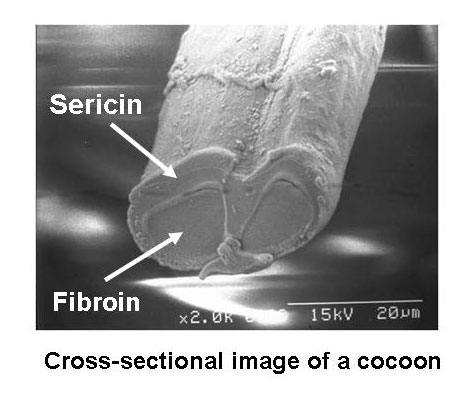
Fibroin is the main element of the silk thread.
The professor originally had interest in the vitamin B6 which is a micronutrient that Japanese people seem to lack most. Vitamin B6 can be found abundantly in hulls, fish, shellfish and soybeans and some are wondering whether the yearly decreasing consumption of it is related to the increase of diseases like cancer among the Japanese (for example, the rate of colon cancer among Japanese is the highest in the world). It is only by chance that I got this position at Hiroshima University and where I could start a joint research on colon cancer with former professor Hiromitsu Watanabe among others of Hiroshima University’s top level Research Institute for Radioactivity and Medicine (now Research Institute for Radiation Biology and Medicine). Then, in 2001, professor Kato’s research group was the first in the world to discover that vitamin B6 prevented colon cancer in mice (Asahi Shimbun Newspaper of September 12, the next morning after the September 11 terror attack). Other domestic and overseas epidemiologic researches also subsequently published several reports that supported the results of animal tests and is nowadays recognized as a major dietary factor in preventing colon cancer. Especially, since there seems to be a common lack of vitamin B6 in the developed world, we cannot neglect this problem anymore. “So, this is where it relates to your research on colon cancer, right?” “Right, actually, the range of reserach is really wide!”
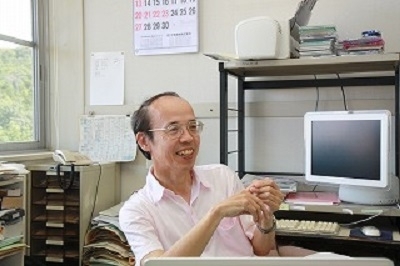
“I came to Hiroshima University as if I was led here, ” says Professor Kato.
What is your specialty?
The professor tells us that his dream when in elementary school was becoming a scientist and when we ask him “what is your favorite word?”, he replies:”realizing my ideas”. The professor, keeping to his desire, worked hard and realized his dream of becoming a scientist, but also says that he attaches importance to the word “serendipity”, a force that turns mere luck into a good opportunity. He says he puts effort in guiding young people of being able to “think” and “act” and wants them to be prepared at all times to grasp the chance when it comes.
Maybe it is because the professor is often invited to have lectures at meetings other than nutritional science, but he says that people often ask him “what is your specialty?”. He says that he answers then that all the things he find interesting are his specialty. He also tells young scientist not to follow what is popular, but to “do things that nobody does or that nobody pays attention to”. It is good that something like that is triggered by meeting people of a different research field, or that one stimulates oneself by looking at drawings or listening to music. I express my support by telling them that I want them to be a scientist who is flexible toward welcoming things outside their specialty and who has a wide range of research.
Afterword
When interviewing professor Kato, he often used the words “by chance” and “I was lucky” and also “I failed all the time”. However does one realize that “Fortune has come!”, by always brushing up one’s ability and sensitivity through paying attention to the trends in the world, collecting and analyzing (even releasing) data? One can also come up with a good idea triggered by a good meeting with people of a different specialty. The professor pleasantly tells us that the opportunity to stimulate one’s thoughts could be anywhere. It is our expectation that collaborations in several research fields will increasingly broaden hereafter. But, professor, are you saying that we should “take Fortune by the forelock, because she is bald behind” after all? (O)


 Home
Home

